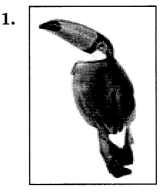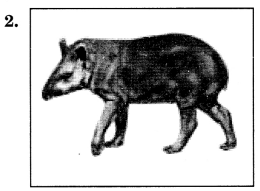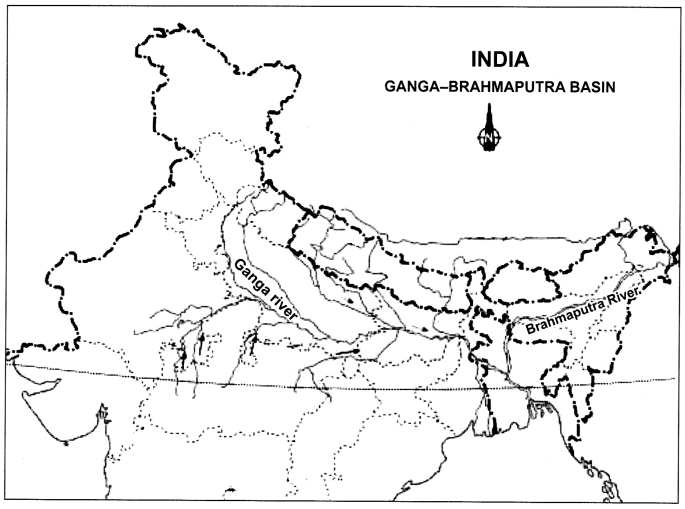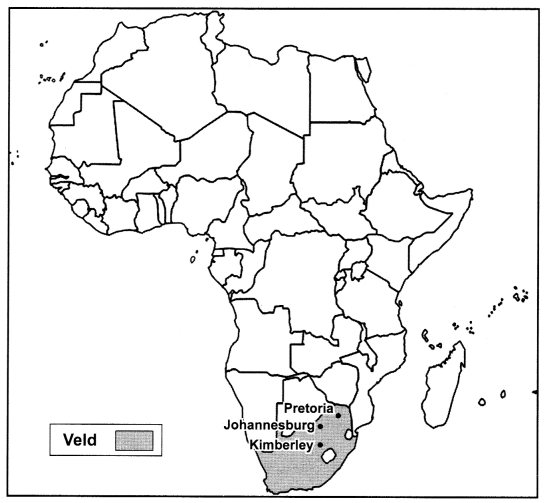MCQ Questions for Class 7 Geography Chapter 8 Human Environment Interactions the Tropical and the Subtropical Region with Answers
Students who are searching for NCERT MCQ Questions for Class 7 Geography Chapter 8 Human Environment Interactions the Tropical and the Subtropical Region with Answers Pdf free download are compiled here to get good practice on all fundamentals. Know your preparation level on MCQ Questions for Class 7 Social Science with Answers. You can also verify your answers from our provided Human Environment Interactions the Tropical and the Subtropical Region Class 7 MCQs Questions with Answers. So, ace up your preparation with MCQ of Chapter 8 Geography Objective Questions.
Human Environment Interactions the Tropical and the Subtropical Region Class 7 MCQs Questions with Answers
Appearing Students of Class 7 Exams can download MCQ on Human Environment Interactions the Tropical and the Subtropical Region Class 7 with Answers from here. By practicing Class 7 Geography Chapter 8 MCQ with Answers, you can score well in the exam. Download Class 7 SST Geography Chapter 8 MCQ in PDF format from the below access links and start practicing on a regular basis for better subject knowledge.
Question 1.
Which of the following city is not located along the river Ganga?
(a) Allahabad
(b) Kolkata
(c) Bengaluru
Answer
Answer: (c) Bengaluru
Question 2.
Which of the following is an important port on the river Hooghly?
(a) Surat
(b) Coimbatore
(c) Kolkata
Answer
Answer: (c) Kolkata
Question 3.
Distinct tribal culture is found in the state:
(a) Arunachal Pradesh
(b) Assam
(c) Manipur
Answer
Answer: (a) Arunachal Pradesh
Question 4.
Slash and bum is:
(a) A way of rearing fish
(b) A way of cultivating land
(c) A way of rearing animals
Answer
Answer: (b) A way of cultivating land
Question 5.
Coffee, maize and coca are:
(a) Cash crop
(b) Non-cash crops
(c) None
Answer
Answer: (a) Cash crop
Question 6.
Which of the following is not a cash crop?
(a) Maize
(b) Cocoa
(c) Rice
Answer
Answer: (c) Rice
Question 7.
Paddy is grown in the region where the amount of:
(a) Rainfall is high
(b) Rainfall is low
(c) Rainfall is very low
Answer
Answer: (a) Rainfall is high
Question 8.
Silk is produced in parts of:
(a) Bihar and Punjab
(b) Bihar and Assam
(c) Delhi and Haryana
Answer
Answer: (b) Bihar and Assam
Question 9.
The delta area is covered with the:
(a) Mangrove forests
(b) Deciduous forests
(c) Plantations
Answer
Answer: (a) Mangrove forests
Question 10.
In parts of Uttarakhand, Sikkim and Arunachal Pradesh the climate is:
(a) Hot and humid
(b) Cool
(c) Hot and wet
Answer
Answer: (b) Cool
Question 11.
Catla are the variety of what?
(a) Snake
(b) Fish
(c) Sloth
(d) None of these
Answer
Answer: (b) Fish
The most popular varieties of the fish are the rohu, catla and hils(a) Fish and rice is the staple diet of the people living in huge areas of Indi(a)
Question 12.
What are the main occupation of the people living in the Ganga-Brahmaputra basin?
(a) Hunting
(b) Shop-keeping
(c) Agriculture
(d) None of these
Answer
Answer: (c) Agriculture
The main occupation of the people living in the Ganga-Brahmaputra basin is the agriculture. The soil is fertile. The density of population of the plains is very high.
Question 13.
How is the climate of Amazon Basin?
(a) Hot and dry
(b) Cold and dry
(c) Hot and wet
(d) None of these
Answer
Answer: (c) Hot and wet
The Amazon Basin stretches directly on the equator and is characterized by hot and wet climate throughout the year.
Question 14.
Kolkata is located on which river?
(a) Orange
(b) Hooghly
(c) Bhagirathi
(d) Yamuna
Answer
Answer: (b) Hooghly
Kolkata is an important port on the River Hooghly. The waterways, is an effective means of transport particularly along the rivers.
Question 15.
What are the staple food of Amazon Manioc are called?
(a) Coco
(b) Cassava
(c) Coriander
(d) Potato
Answer
Answer: (b) Cassava
The staple food is manioc also known as cassava that grows under the ground like the potato. They also eat queen ants and egg sacs. Cash crops like coffee, maize and cocoa are also grown.
Question 16.
What are the major cities located on the river Ganga?
(a) Patna
(b) Allahabad
(c) Haridwar
(d) All of these
Answer
Answer: (d) All of these
The major cities located on the river Ganga are Allahabad, Haridwar, Varanasi and Patna.
Question 17.
What do you mean by the term ‘population density’?
(a) Number of persons live in one square kilometre of area
(b) Number of animals live in one square kilometre of area
(c) Number of persons live in hundred square kilometre of area
(d) None of these
Answer
Answer: (a) Number of persons live in one square kilometre of area
Population density means the number of persons that live in one square kilometre of are(a)
Question 18.
Where did the Bengal tiger is found?
(a) Mountains
(b) Delta area
(c) Amazon
(d) Deserts
Answer
Answer: (b) Delta area
The Bengal tiger is found in delta area primarily in India with smaller populations. Bangladesh, Nepal, Bhutan, China and Myanmar.
Question 19.
Name the birds that you are likely to find in the rain forest of the Amazon?
(a) Toucans
(b) Humming birds
(c) Both a and b
(d) None of these
Answer
Answer: (c) Both a and b
Birds such as toucans, humming birds, birds of paradise et(c) are found in the forests of Amazon.
Question 20.
Name the continent in which Amazon basin is locate(d)
(a) North Africa
(b) Asia
(c) South Africa
(d) None of these
Answer
Answer: (c) South Africa
South Africa is the continent in which Amazon basin is locate(d)
Match the following
1.
| Column I | Column II |
| 1. Manioc | (a) The place where a river flows into another body of water. |
| 2. Tributaries | (b) A staple food of the people of the Amazon basin. |
| 3. Piranha | (c) A type of farming. |
| 4. Mouth | (d) Small rivers that join the main river. |
| 5. Slash and Burn | (e) A fish that eats flesh |
Answer
Answer:
| Column I | Column II |
| 1. Manioc | (b) A staple food of the people of the Amazon basin. |
| 2. Tributaries | (d) Small rivers that join the main river. |
| 3. Piranha | (e) A fish that eats flesh |
| 4. Mouth | (a) The place where a river flows into another body of water. |
| 5. Slash and Burn | (c) A type of farming. |
Fill in the blanks
1. The amazon basin lies in the ……………. region.
Answer
Answer: equatorial
2. Large apartments like houses with steeply slanting roofs are called ……………. .
Answer
Answer: malocas
3. Catla is a variety of ……………. .
Answer
Answer: fish
4. ……………. is the largest river basin in the worl(d)
Answer
Answer: Amazon basin
5. ……………. is an important port on the river of Hooghly.
Answer
Answer: Kolkata
6. Son River is a tributary of the river ……………. .
Answer
Answer: Ganga
7. Manioc is also known as ……………. .
Answer
Answer: cassava
8. Shade tolerant vegetation grows in the ……………. forest.
Answer
Answer: Amazon
9. ……………. are special plants that store water in their leaves.
Answer
Answer: bromeliads
10. Bengal tiger is found in ……………. are(a)
Answer
Answer: delta
11. In the Amazon basin areas one of the great uses of wood is ……………. .
Answer
Answer: to make the house
Picture Based Questions
1. Identify the following pictures:




Answer
Answer:
1. Toucans
2. Tapir
3. Paddy Cultivation
4. Tea Garden in Assam
Map Skills
1. On an outline map of India, mark the cities located at Ganga-Brahmaputra basin.
Answer
Answer:

Use the above-provided NCERT MCQ Questions for Class 7 Geography Chapter 8 Human Environment Interactions the Tropical and the Subtropical Region with Answers Pdf free download and get a good grip on the fundamentals of real numbers topic. Need any support from our end during the preparation of Human Environment Interactions the Tropical and the Subtropical Region Class 7 MCQs Multiple Choice Questions with Answers then leave your comments below. We’ll revert back to you soon.
